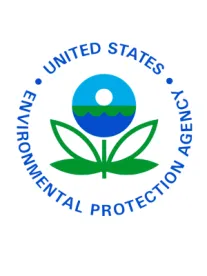On June 22, 2017, US EPA issued three major rules required by the Frank R. Lautenberg Chemical Safety for the 21st Century Act (LCSA), which amended the Toxic Substances Control Act (TSCA) in 2016. The three TSCA rules addressed: (1) “resetting” the TSCA Inventory, (2) chemical substances prioritization, and (3) risk evaluations for chemical substances. The Prioritization and Risk Evaluation rules were published in the Federal Register on July 20. As of the date of this writing, the Inventory Reset rule has not yet been published in the Federal Register. Squire Patton Boggs has prepared detailed client alerts addressing each of these rules and their implementation. A summary of each rule along with the client alert link is provided below.
TSCA Inventory Reset Rule
The Inventory Reset Rule requires every chemical manufacturer and importer to notify US EPA of each chemical substance it manufactured or imported for a non-exempt commercial purpose in the US during the 10-year period ending June 21, 2016 (the “lookback period”). Manufacturers and importers must provide this notification to US EPA within 180 days from the date on which the rule is formally published in the Federal Register. Each chemical substance for which US EPA receives such a notification will be designated as “active” on the TSCA Inventory.
The rule also gives chemical processors the option to report to US EPA any chemical substance they processed during the same lookback period, but they must do so within 420 days from the rule’s Federal Register publication date. Processors are given an extended submission period to allow them to review a “draft” version of the revised Inventory that US EPA will issue approximately 60 days after the close of the 180-day reporting period for manufacturers and importers. Processors thus will have roughly 180 days after US EPA issues the draft revised Inventory to identify any chemical substances that manufacturers have failed to designate as “active” and submit notices to US EPA for the substances they processed during the lookback period, in order to keep such substances from being designated as inactive.
Any chemical substance not reported to US EPA by a manufacturer, importer or processor by the applicable deadline will be designated as “inactive” on the Inventory. Once the Inventory “reset” is finalized, no one may manufacture, import or process an inactive substance without giving US EPA prior notice not more than 90 days before the anticipated date of manufacturing, importing or processing.
TSCA Prioritization Rule
Under the amended TSCA, US EPA is required to prioritize chemical substances on the TSCA Inventory as “high priority” or “low priority.” US EPA then must conduct risk evaluations on the high priority substances. The Prioritization Rule sets forth a three-step process that US EPA will follow for prioritizing chemical substances on the TSCA Inventory: (1) initiation; (2) proposed designation; and (3) final designation. Once formally initiated (Step 1), the prioritization process must last at least nine months, but cannot last longer than 12 months.
The amended TSCA requires US EPA to give preference to substances listed in the agency’s 2014 TSCA Work Plan that are persistent and bioaccumulative, that are known human carcinogens and/or have high acute and chronic toxicity. Additionally, because the amended TSCA requires that 50% of all ongoing risk evaluations be conducted on substances listed on the Work Plan, the agency intends to draw at least 50% of the high-priority substances from the Work Plan. Although substances newly added to the TSCA Inventory are candidates for prioritization, the preamble to the rule states that such substances are not likely to be high-priority candidates given that they recently have undergone premanufacture notice (PMN) review.
TSCA Risk Evaluation Rule
The Risk Evaluation Rule outlines the process by which it will conduct risk evaluations on chemical substances under the amended Toxic Substances Control Act (TSCA), to determine whether the substances present an unreasonable risk of injury to health or the environment under the conditions of use. The steps in US EPA’s risk evaluation process include the scope of the risk evaluation, hazard assessment, exposure assessment, risk characterization and risk determination. US EPA will use this process for (1) the first 10 chemical substances that it selected for risk evaluation from its Work Plan chemicals list last November (as required by the amended TSCA); (2) substances designated as high-priority substances during the prioritization process; and (3) substances for which US EPA initiates a risk evaluation in response to manufacturer requests.
Each risk evaluation must: (1) integrate and assess available information on hazards and exposure for the conditions of use of the chemical substance, including information on specific risks of injury to health or the environment and information on potentially exposed or susceptible subpopulations; (2) describe whether aggregate or sentinel exposures were considered and the basis for that consideration; (3) take into account, where relevant, the likely duration, intensity, frequency and number of exposures under the conditions of use; and (4) describe the weight of the scientific evidence for the identified hazards and exposure.



 />i
/>i
